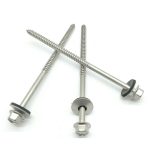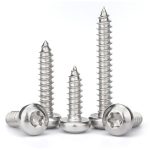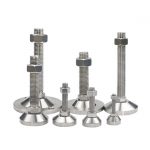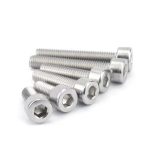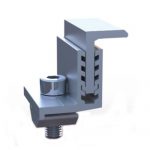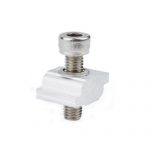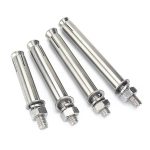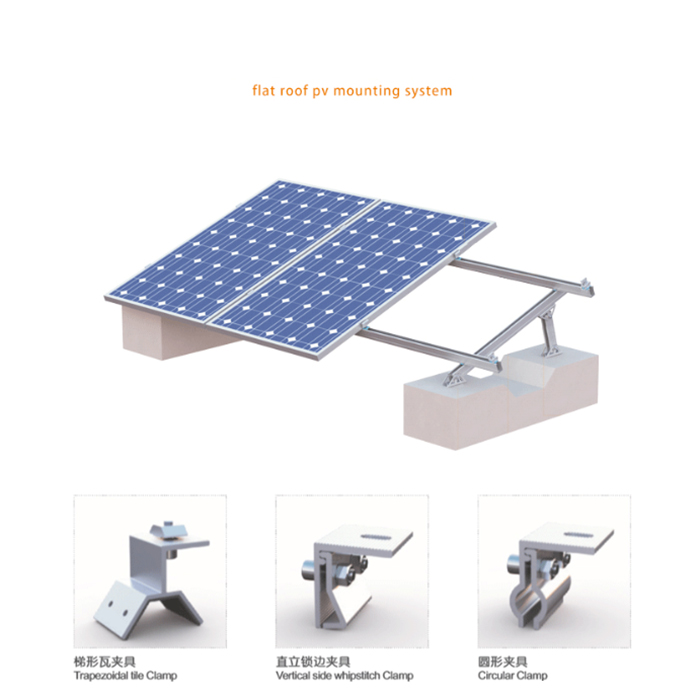
Standard: Power Solar System
Material: Aluminium /Stainless steel/Steel
Surface finish:Plain or Customized
Packing: cartons with furmigated pallets
Supply ability: 50tons per month
The world is facing an energy crisis, and we need to find more sustainable sources of power. Solar power is one such solution that has been gaining popularity over the years. A power solar system converts the energy from the sun into electricity that can power homes, businesses, and industries. In this article, we will explore the concept of a power solar system, how it works, its benefits, and the future of solar power.
What is a Power Solar System?
A power solar system, also known as a solar power system, is a system that uses solar panels to capture the energy from the sun and convert it into usable electricity. The solar panels are usually mounted on the roof of a building or on the ground. The electricity produced by the solar panels can be used to power appliances, lights, and other electrical devices in the building.
How Does a Power Solar System Work?
A power solar system works by using photovoltaic (PV) cells, which are made of silicon, to convert sunlight into electricity. When sunlight hits the PV cells, it creates an electric field that causes electrons to move. This movement of electrons generates a flow of electricity that can be used to power appliances or stored in batteries for later use.
Types of Solar Panels
There are two types of solar panels: monocrystalline and polycrystalline. Monocrystalline solar panels are made from a single crystal of silicon, which makes them more efficient at converting sunlight into electricity. Polycrystalline solar panels are made from multiple crystals of silicon, which makes them less efficient than monocrystalline panels but also less expensive.
Components of a Power Solar System
A power solar system consists of several components, including:
- Solar panels
- Inverter
- Battery
- Charge controller
- Electrical wiring
The solar panels capture the energy from the sun and convert it into electricity. The inverter converts the DC (direct current) electricity produced by the solar panels into AC (alternating current) electricity that can be used to power appliances. The battery stores excess electricity generated by the solar panels for later use. The charge controller regulates the flow of electricity between the solar panels and the battery. Electrical wiring connects all of the components together.
Advantages of a Power Solar System
There are several advantages to using a power solar system, including:
- Renewable energy source: Solar power is a renewable source of energy that will never run out.
- Reduced electricity bills: By using solar power, you can reduce your electricity bills.
- Low maintenance: Solar panels require very little maintenance and can last for up to 25 years.
- Environmentally friendly: Solar power is a clean and green source of energy that produces no pollution.
- Energy independence: By generating your own electricity, you can become more independent from the grid.
Cost of a Power Solar System
The cost of a power solar system varies depending on several factors, including the size of the system, the type of solar panels used, and the location of the building. However, the cost of solar panels has been decreasing over the years, making solar power more accessible to the general public. In many cases, the cost of a power solar system can be recovered within a few years through energy savings.
The Future of Solar Power
Solar power has been growing rapidly in popularity and is expected to continue to do so in the future. The International Energy Agency predicts that solar power will be the largest source of electricity by 2035. The development of new technologies, such as solar shingles and solar windows, is making it easier for more people to use solar power.
Challenges Facing Solar Power
While solar power has many advantages, there are also several challenges that need to be addressed. One challenge is the intermittency of solar power, which means that the energy output fluctuates depending on the weather conditions. Another challenge is the initial cost of installing a power solar system, which can be expensive. However, as technology advances and costs continue to decrease, these challenges are likely to become less of an issue.
Solar Power in Developing Countries
Solar power has the potential to provide energy to millions of people in developing countries who currently lack access to electricity. Solar-powered microgrids can be installed in remote areas to provide energy for lighting, cooking, and other basic needs. Solar power can also help to reduce greenhouse gas emissions in developing countries.
Solar Power and the Environment
Solar power is a clean and green source of energy that produces no pollution. It does not emit greenhouse gases, which contribute to climate change. However, the production of solar panels does have some environmental impact, including the use of toxic chemicals and the generation of waste. Efforts are being made to reduce the environmental impact of solar panel production.
Conclusion
A power solar system is a sustainable source of energy that has many advantages over traditional sources of power. It is renewable, environmentally friendly, and can help to reduce electricity bills. While there are challenges facing solar power, it has the potential to play a major role in meeting the world's energy needs in the future.
FAQs
How long do solar panels last?
Solar panels can last up to 25 years or more with proper maintenance.
How much does a power solar system cost?
The cost of a power solar system varies depending on several factors, but it can be recovered through energy savings over time.
What is the difference between monocrystalline and polycrystalline solar panels?
Monocrystalline solar panels are more efficient but more expensive than polycrystalline panels.
How does a solar panel work at night?
Solar panels do not work at night, but excess energy generated during the day can be stored in batteries for later use.
Can solar power be used in cloudy weather?
Solar panels can still produce energy in cloudy weather, but their output will be lower than on sunny days.


